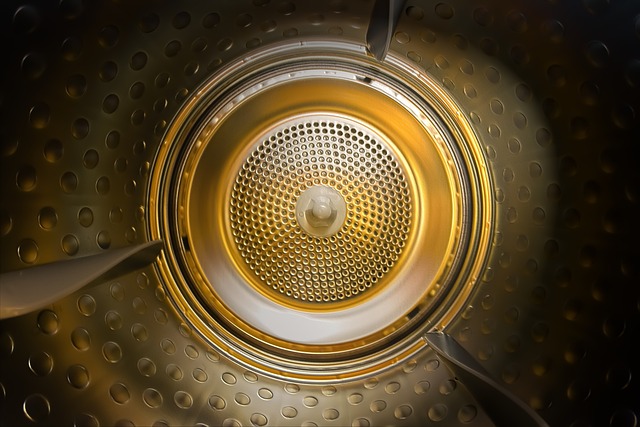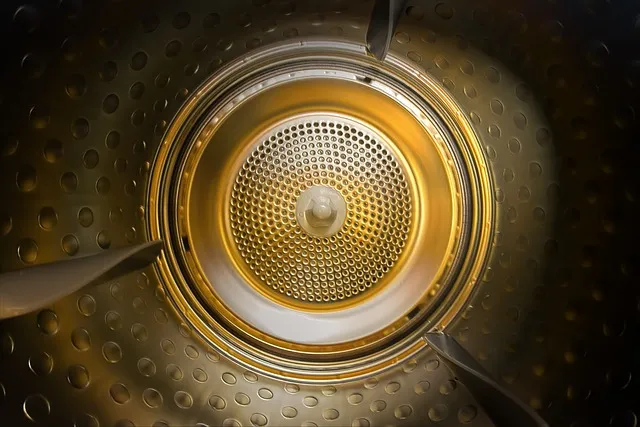How Do Energy-Efficient Dryers Contribute to LEED Certification?
Imagine energy-efficient dryers as the unsung heroes of eco-friendly buildings. These aren’t just appliances; they’re vital players in the LEED certification game. LEED, or Leadership in Energy and Environmental Design, rewards buildings that meet high standards of sustainability. One crucial way these buildings score points is through their energy efficiency, and this is where our trusty dryers come into play.
Energy-efficient dryers are designed to consume less electricity compared to their traditional counterparts. This doesn’t just mean lower utility bills (though that’s a nice perk); it also translates into a smaller carbon footprint. By using advanced technology, such as heat pump systems or moisture sensors, these dryers optimize energy use. It’s like having a smart assistant who not only keeps things running smoothly but also makes sure you’re not wasting resources.
In the context of LEED certification, every little bit counts. Energy-efficient dryers contribute to various LEED credits, especially those related to energy performance. They help in achieving the energy and atmosphere credits by significantly reducing the amount of energy a building uses. It’s akin to adding a few more puzzle pieces to complete a picture of a highly efficient, environmentally friendly structure.
In summary, when it comes to earning that shiny LEED badge, energy-efficient dryers are a key player, quietly making a big difference in both the building’s operational costs and its environmental impact.
How Energy-Efficient Dryers Boost LEED Certification: A Green Revolution in Laundry
LEED, which stands for Leadership in Energy and Environmental Design, is a globally recognized symbol of sustainability achievement. So, how do energy-efficient dryers fit into this green puzzle? Think of them as the unsung heroes of the laundry room. These dryers are designed to use less electricity while still delivering the same high-performance results. It’s like getting all the benefits of a top-notch workout without breaking a sweat—your clothes come out perfectly dry, but your energy consumption remains low.

By integrating these dryers into a building’s infrastructure, you’re not just reducing your carbon footprint; you’re also racking up points towards that coveted LEED certification. These dryers are engineered to minimize energy consumption and maximize efficiency, which directly contributes to the overall green footprint of a building. It’s like having a friend who’s always looking out for your best interests, ensuring you stay on track for your environmental goals.
What’s even cooler is that energy-efficient dryers often come with advanced features like moisture sensors that optimize drying time. This means they adjust the cycle based on the actual moisture levels in your clothes, avoiding over-drying and saving energy. Imagine having a personal assistant for your laundry—one who not only does the job but also helps you save money and the planet at the same time!

So, if you’re aiming for LEED certification or just want to make a positive impact on the environment, switching to an energy-efficient dryer is a small but mighty step in the right direction.
From Laundry Rooms to LEED Points: The Role of Energy-Efficient Dryers in Sustainable Building
Imagine your standard dryer—loud, clunky, and gobbling up energy like it’s going out of style. Now picture an energy-efficient dryer: sleek, quiet, and designed to use less electricity. It’s like swapping out a gas-guzzling car for a hybrid. This isn’t just about saving a few bucks on your energy bill; it’s about significantly reducing your carbon footprint.
So, how does this translate to LEED points? LEED (Leadership in Energy and Environmental Design) is a green building certification that scores buildings on their energy efficiency and sustainability. One of the easiest ways to rack up those precious points is by incorporating energy-efficient appliances. When you use a dryer that consumes less power, you’re not only cutting costs but also boosting your building’s green credentials.
Think of energy-efficient dryers as the unsung heroes of eco-friendly design. They use advanced technology like moisture sensors and heat pump systems to dry clothes with minimal energy. It’s like having a smart assistant that knows exactly how much energy is needed and stops when the job is done—no waste, no fuss.
In a world where every little bit helps, these dryers prove that even the most mundane tasks can contribute to a greener future. So, the next time you’re updating your building’s amenities or thinking about your own laundry room, remember: making the switch to an energy-efficient dryer isn’t just a good choice—it’s a crucial step toward a more sustainable world.
Unlocking LEED Credits: The Hidden Power of Energy-Efficient Dryers in Green Building Projects
You might be wondering, how do dryers contribute to LEED certification? It’s simple: these dryers consume less energy compared to their traditional counterparts. In the world of LEED, every watt saved counts, and energy-efficient dryers help in reducing the overall energy consumption of a building. This reduction in energy use directly translates into lower greenhouse gas emissions and a smaller carbon footprint, both of which are key criteria for LEED certification.
Think of it this way: if your building’s energy use was a pie chart, choosing an energy-efficient dryer helps slice off a significant chunk of energy consumption. By doing so, you’re not just making a small tweak in your laundry room; you’re contributing to the overall sustainability of your building. It’s like finding a hidden treasure that not only boosts your building’s green credentials but also promotes long-term environmental benefits.
Energy-efficient dryers often come equipped with advanced technologies, like moisture sensors, that adjust drying time and temperature based on the load. This means they use only the energy necessary to get the job done, avoiding the wastefulness of over-drying. The result? A more efficient operation that aligns perfectly with LEED’s energy performance criteria.
So, when you’re setting out to achieve LEED certification, don’t overlook the power of your dryer. Investing in energy-efficient models can make a significant difference, transforming your building into a greener, more sustainable space while earning those essential credits.
The LEED Advantage: How Energy-Efficient Dryers are Transforming Sustainable Architecture
These dryers aren’t just about cutting down on your utility bills—they’re designed to use significantly less energy compared to traditional models. By optimizing energy use, they help buildings earn LEED credits, which can elevate a structure’s environmental rating. Think of it as the difference between a sports car and a hybrid—both get you to your destination, but one is a lot more eco-friendly.
Energy-efficient dryers use advanced technology to dry clothes faster and more effectively. They often feature sensor drying that stops the machine when clothes are perfectly dry, which prevents wasted energy. Additionally, some models are designed to use less water and have shorter drying cycles, further cutting down on energy use.
In the context of sustainable architecture, integrating these dryers into your design is like adding a final touch to a masterpiece. They complement other green technologies and materials, creating a building that doesn’t just look good but also performs exceptionally well in terms of energy conservation. Imagine your home or office as a well-oiled machine where every component is optimized for efficiency—energy-efficient dryers are a key player in this intricate dance.
So next time you’re considering upgrading your appliances, think beyond just the immediate benefits. Opting for energy-efficient dryers can make a significant difference in achieving a LEED certification, and ultimately, contribute to a more sustainable future.
Why Energy-Efficient Dryers Are Key Players in Achieving LEED Certification for Your Building
Energy-efficient dryers significantly reduce your building’s overall energy consumption. Picture this: conventional dryers gulp down energy like a parched traveler at an oasis, whereas energy-efficient models sip thoughtfully, saving you a bundle on utility bills and cutting down on greenhouse gas emissions. By incorporating these smart machines, you’re not just saving cash; you’re making a real impact on the environment.
Moreover, these dryers come with advanced features that optimize drying cycles, reducing wear and tear on clothes. This means less frequent replacements and less textile waste, which is another feather in your LEED cap. It’s like having a top-notch personal trainer for your laundry—maximizing performance while minimizing strain.
Another compelling reason is the potential for improved indoor air quality. Energy-efficient dryers often feature better filtration systems, which helps keep the air inside your building cleaner. This is crucial for meeting LEED criteria related to indoor environmental quality. Imagine walking into a fresh, clean space every time; that’s what these dryers help achieve.
In essence, energy-efficient dryers are more than just appliances—they’re a key component of a sustainable strategy. They’re your ticket to reducing your building’s carbon footprint while enhancing its overall efficiency. And, as you inch closer to that coveted LEED certification, these dryers are the reliable allies you want in your green building arsenal.

